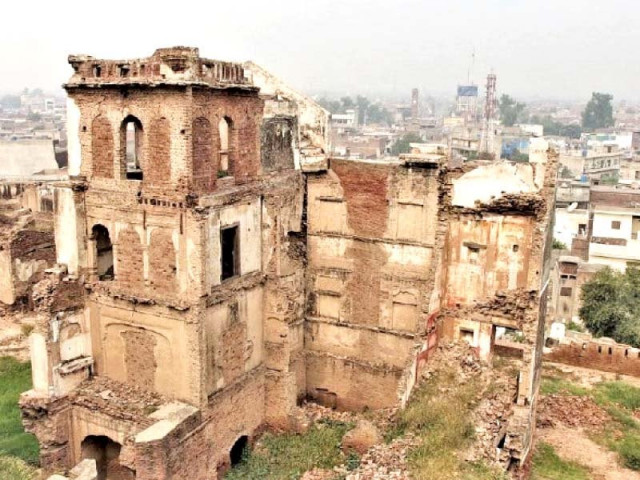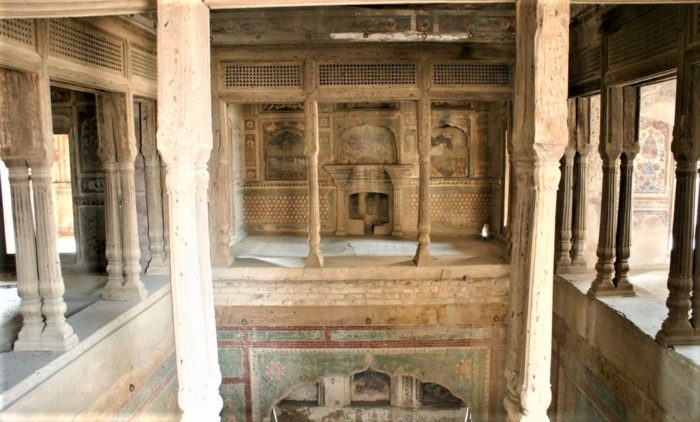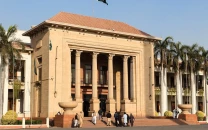Crumbling Sheikhupura Fort awaits restoration
Revival plans for 413-year-old site fail to take off

PHOTO: EXPRESS
The stronghold was reportedly built on the instructions of Mughal Emperor Nuruddin Muhammad Salim, who later adopted the imperial title ‘Jahangir’ after ascending the throne.
Since its construction in 1607, the fort hosted Mughal, Sikh and British rulers and now flaunts a rich architectural and cultural history spread over centuries.
Locals who were barred from going inside the edifice now narrate several stories passed on from generations.
One of the residents of an area adjoining the site, Majid Ali, is adamant that the fort is haunted by past queens, princesses, rulers and their staff.
“We were told by our elders that the building is possessed by restless souls,” he remarked. “It is haunted! No one wants to go near the fort at night,” a senior citizen, Ibadat Ali, supported the claim.
 PHOTO: EXPRESS
PHOTO: EXPRESSOn the contrary, former director of Punjab Department of Archaeology Afzal Khan refuted the claims, saying, “All stories about the fort being haunted are fictitious.”
Afzal said he believes in the existence of Jinns but there is no reality to stories narrated about ghosts haunting the Sheikhupura Fort.
Malik Maqsood, Director of Punjab Archaeology Department, explained that the entry of citizens has been banned due to the dilapidated condition of the fort and not because it is haunted.
A visit to the fort makes evident that the historical site has been neglected by the authorities for years.
Reportedly, in 2010, the United States government announced a joint restoration project with the federal government but after the 18th amendment to the constitution of Pakistan the archaeology department was transferred to the provinces and the project was shelved.
In 2017, the Punjab government approved another project to renovate the fort, prepare necessary documents and protect it from rainwater and floods at an estimated cost of Rs4.5 million; but history repeated itself and the project was never completed.
Yet again in the financial year 2019-20, funds of Rs10 million were allocated by the provincial government for the restoration work of the royal fortress. The Punjab Archaeology Department director insists that the repair work will only begin after the completion of its 'design and documentation phase’ under the current project.
Meanwhile, several parts of the fort have collapsed and many chambers are now inaccessible. The formidable walls still stand tall with diamond-shaped parapets that catch the eye from far away. Ten bastions have also survived the torments of the past and present.
 PHOTO: EXPRESS
PHOTO: EXPRESSOn the inside, the citadel, although dilapidated, asserts its past glory through intricate wood work, pastel frescos, neat calligraphy, elaborate residential chambers, expansive gardens and grand elephant mounting platforms among other attractions.
Historians believe the fortress was used by Jahangir as a temporary residence when he travelled across the length and breadth of his empire.
Towards the end of 17th century, Sikhs established their empire across Punjab and the fort was redecorated as per the requirements of their royalty. Some mansions were also built inside the fort to accommodate the new emperors.
Published in The Express Tribune, June 18th, 2020.


















COMMENTS
Comments are moderated and generally will be posted if they are on-topic and not abusive.
For more information, please see our Comments FAQ